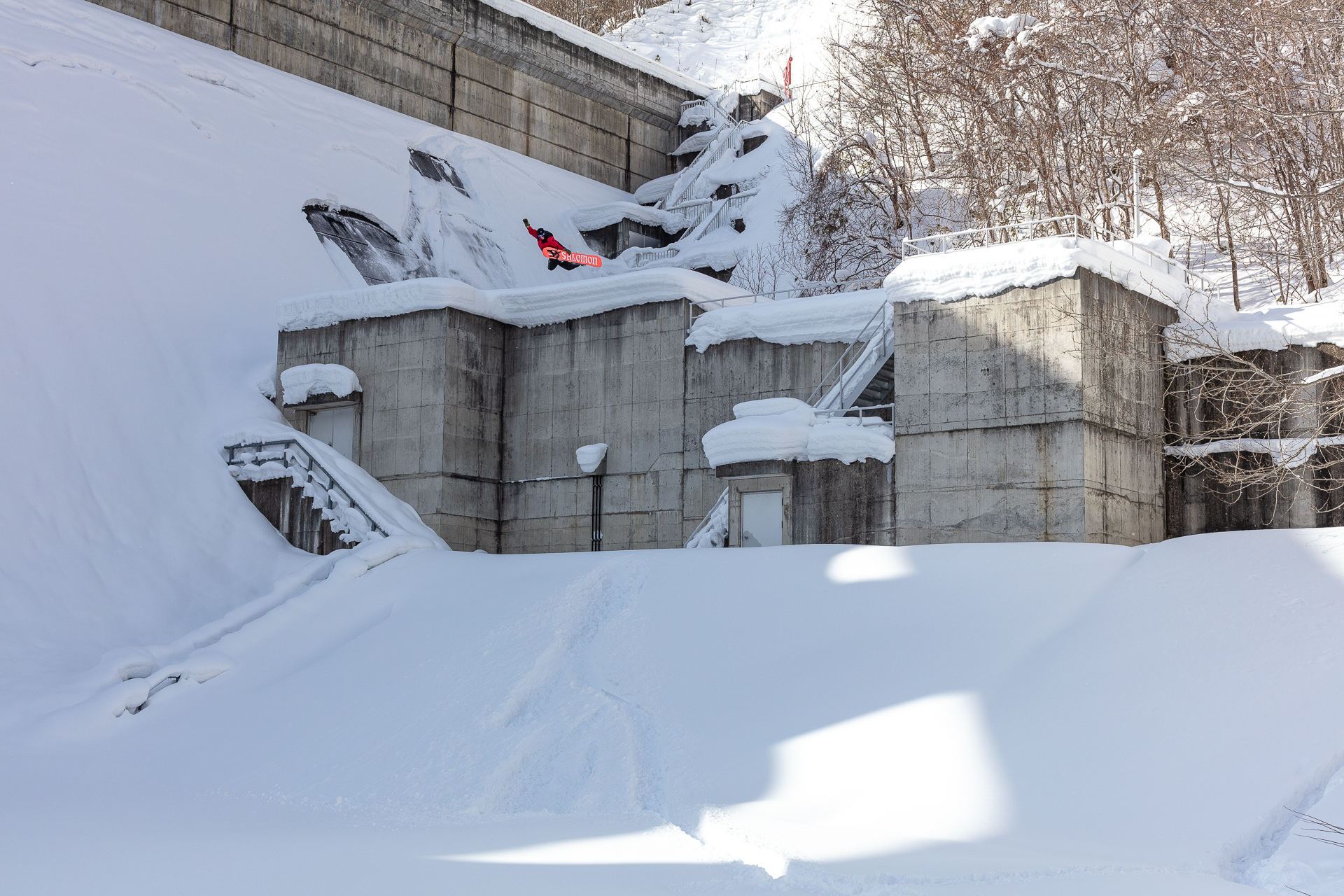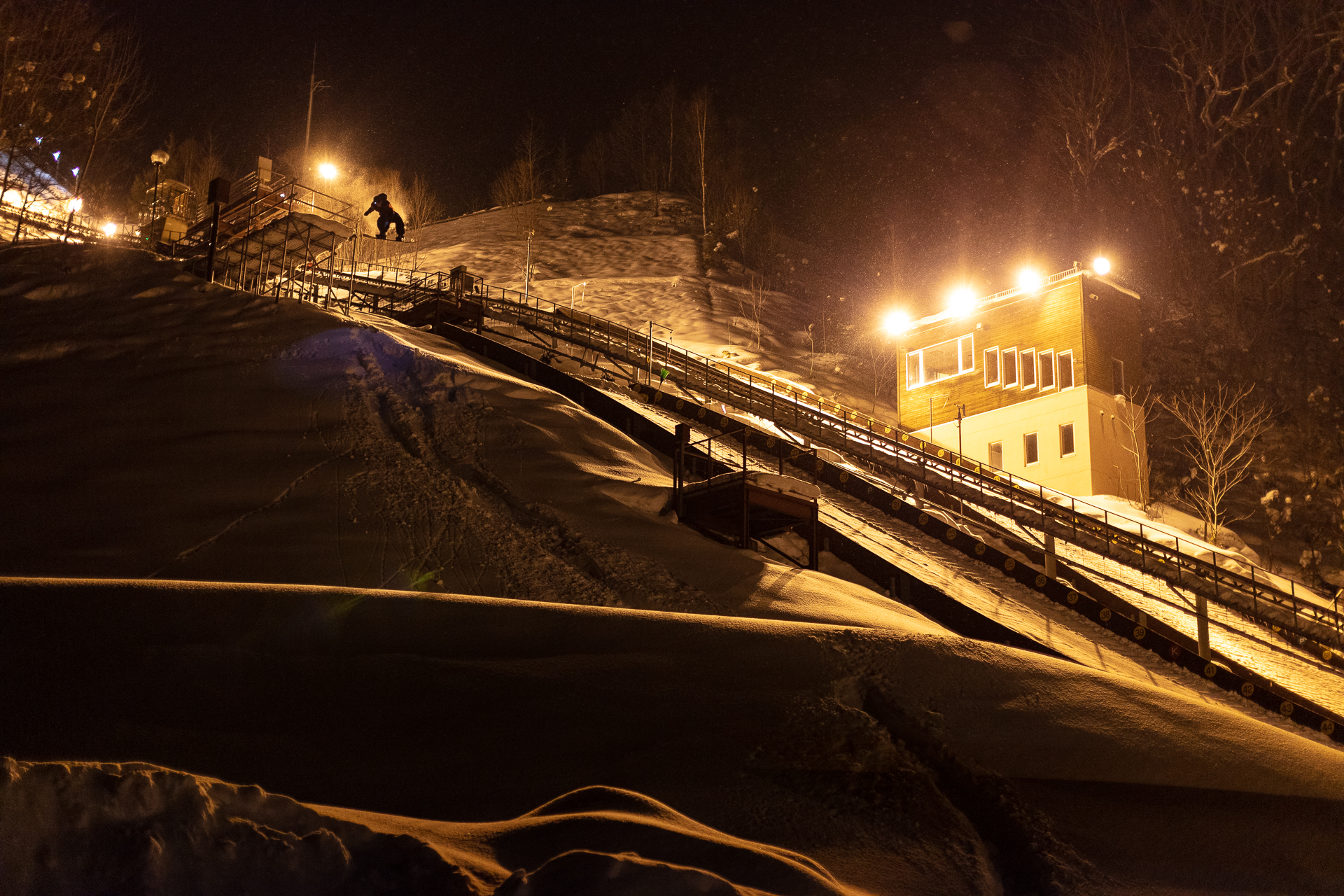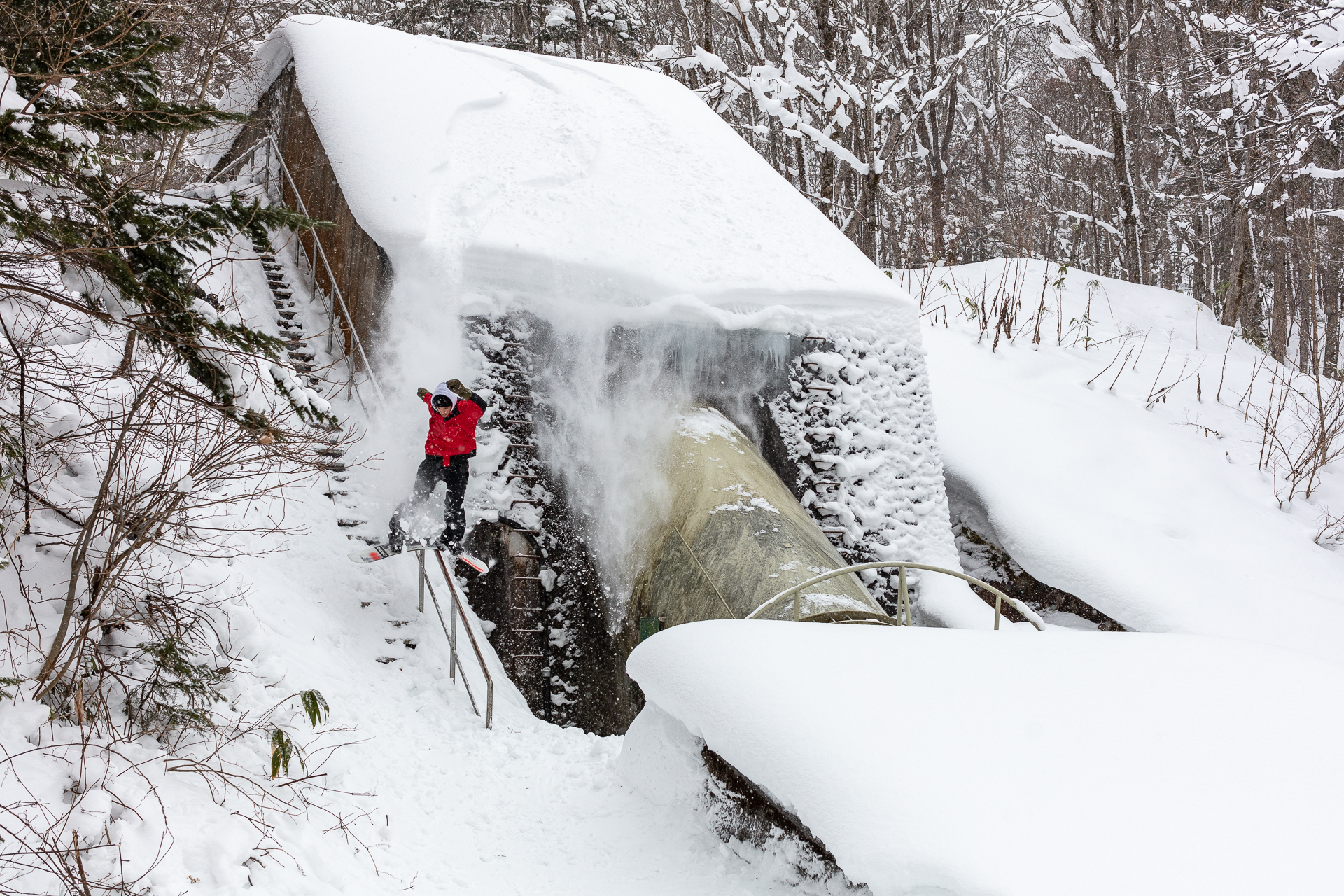REVIEW
Salomon Highlander Bindings
The snowboard binding, for the most part, has remained unchanged for the past few decades. Sure, there have been many tweaks to make them better—streamlined straps, canted and multi-density adjustable footbeds, smoother ratchets, etc—but the structural engineering of a binding has remained remarkably similar. If a solid heelcup/highback/baseplate combo ain’t broke, why fix it, right? Well, comfort. Indeed, we’ve seen some experiments to address flex patterns (and in some cases movement patterns), a few of which worked, a few of which failed. And I’m here to talk about one that worked: Salomon’s ShadowFit technology, as applied to their stiff, all-mountain focused Highlander Bindings.
 Before I got a pair of the Highlanders, I’d never ridden Salomon bindings. But the idea of a flexible heel cup was intriguing. Having a binding that conforms to your boot and flexes laterally made sense to me, both in terms of relieving a bit of pressure off the heel and instep while riding, as well as providing a bit more freedom of movement while engaging an edge or tweaking an air. So, at the start of last season, I got a pair. I rode them the full season across multiple board and boot combinations (Salomon Malamute and Burton Ions primarily for boots, Salomon Super 8 and Lib Tech Dynamo for boards, among others). Put simply, they worked as advertised. I’ve still got them in the rotation this season, and they’re going strong with no broken parts. More importantly, I noticed a significant reduction in foot pain after long days of resort bashing.
Before I got a pair of the Highlanders, I’d never ridden Salomon bindings. But the idea of a flexible heel cup was intriguing. Having a binding that conforms to your boot and flexes laterally made sense to me, both in terms of relieving a bit of pressure off the heel and instep while riding, as well as providing a bit more freedom of movement while engaging an edge or tweaking an air. So, at the start of last season, I got a pair. I rode them the full season across multiple board and boot combinations (Salomon Malamute and Burton Ions primarily for boots, Salomon Super 8 and Lib Tech Dynamo for boards, among others). Put simply, they worked as advertised. I’ve still got them in the rotation this season, and they’re going strong with no broken parts. More importantly, I noticed a significant reduction in foot pain after long days of resort bashing.
So, how do they work? An anatomical three-piece baseplate is tethered to a Kevlar Quickwire, which runs through a soft, minimalist heel cup. This allows for lateral flexibility in the heel cup unlike any other binding on the market, while retaining the medial support essential for transferring power to your edges. It’s integrated with all those other tech advancements we’ve grown to love and expect from high end binders: canted footbeds, lightweight ergonomic straps, 3D highbacks built to conform to your boot, and a number of other bells and whistles that, as a whole, add to the comfort and performance of the bindings without sacrificing durability.
The heel cup, of course, is what sets the Highlanders apart. I’ve already mentioned that I noticed a relief from that crank-down induced foot pain (yes, I’m guilty of over-cranking my heel straps like many of you). But there are also subtle improvements in feel. Land heavy and get a bit forward, and the bindings flex laterally, allowing for added ease in recovery not available with rigid heel cups. I’m not saying it’ll stop you from tomahawking, but it may make you a little less likely to go over the nose on a botched air. Same goes for leaning into carves or tweaking an air—it’s a few percentage points better being able to flex your weight into the heel cup and play with lateral movement rather than relying on a rigid form of leverage. Essentially, there’s a bit more freedom of movement and feel through the bindings, which is nice on my aging bones and ligaments.
All that to say, incremental improvements are good, even if they take a leap in engineering to achieve. So, the next time you’re at your local Salomon dealer, it’s worth grabbing a pair to see for yourself. Those little Kevlar cables may look a bit different, but they do add a modicum of improvement to the binding technology we’ve come to accept as the standard design over the past few decades. And for that I can fully endorse the Salomon Highlanders as a go-to binding for the everyday rider looking for a little more comfort and control in their boot to board interface.
ABOUT THE TESTER
Age: 39
Years Riding: 27
Height: 5’7”
Weight: 150 lbs
Local resort: Mt. Baker, WA
Riding style: Fall-line/freeride oriented



